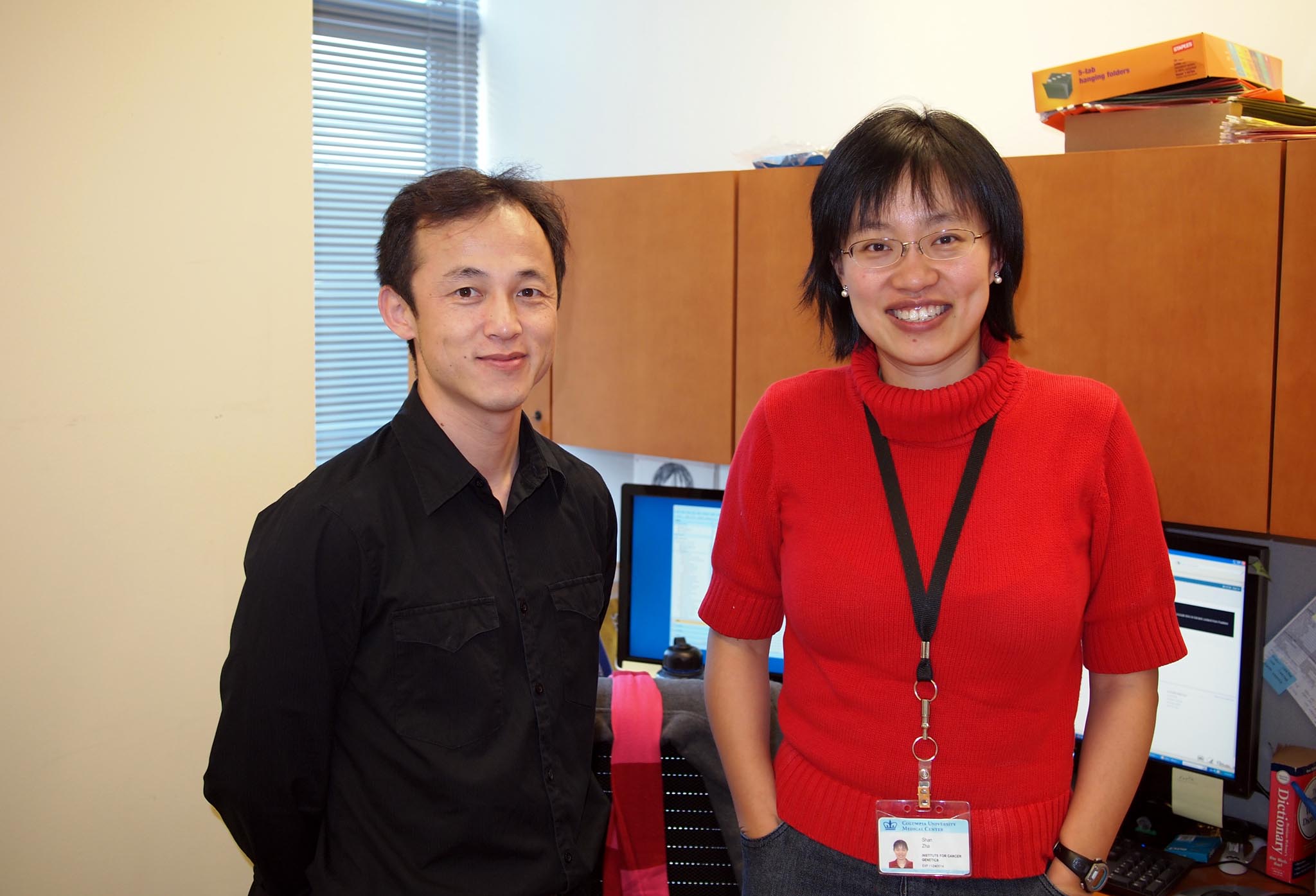|
|
|
|
Many congratulations to Drs. Shan Zha (right) and Chunguang Guo (left) for publishing a Nature paper in Dec, 2010! Both Dr. Zha and Dr. Guo are post-doctoral fellows in the laboratory of Dr. Frederick W. Alt. Dr. Shan Zha obtained her Ph.D. degree from Johns Hopkins University School of Medicine |
 |
and recently joined Columbia University Medical Center as an Assistant Professor of Pathology and Pediatrics. Dr. Chunguang Guo obtained his Ph.D degree from Case Western Reserve University and joined Dr. Alt's lab in 2008.
|
The title of their recent Nature paper is "ATM damage response and XLF repair factor are functionally redundant in joining DNA breaks" [Nature. 2010 Dec 15. Epub ahead of print]. Here is the short description of their work:
The story discovered that certain factors central in maintaining DNA stability are capable of 'standing in' for each other. Classical non-homologous DNA end-joining (NHEJ) is a major mammalian DNA double-strand-break (DSB) repair pathway. Deficiencies for classical NHEJ factors, such as XRCC4, abrogate lymphocyte development, owing to a strict requirement for classical NHEJ to join V(D)J recombination DSB intermediates. The XRCC4-like factor (XLF; also called NHEJ1) is mutated in certain immunodeficient human patients and has been implicated in classical NHEJ; however, XLF-deficient mice have relatively normal lymphocyte development and their lymphocytes support normal V(D)J recombination. The ataxia telangiectasia-mutated protein (ATM) detects DSBs and activates DSB responses by phosphorylating substrates including histone H2AX. However, ATM deficiency causes only modest V(D)J recombination and lymphocyte developmental defects, and H2AX deficiency does not have a measurable impact on these processes. Reporting online December 15 in Nature, co-first authors Drs. Shan Zha and Chunguang Guo and a team from the lab of Frederick Alt found that, XLF, ATM and H2AX all have fundamental roles in processing and joining DNA ends during V(D)J recombination, but that these roles have been masked by unanticipated functional redundancies. Thus, combined deficiency of ATM and XLF nearly blocks mouse lymphocyte development due to an inability to process and join chromosomal V(D)J recombination DSB intermediates. Combined XLF and ATM deficiency also severely impairs classical NHEJ, but not alternative end-joining, during IgH class switch recombination. Redundant ATM and XLF functions in classical NHEJ are mediated by ATM kinase activity and are not required for extra-chromosomal V(D)J recombination, indicating a role for chromatin-associated ATM substrates. Correspondingly, conditional H2AX inactivation in XLF-deficient pro-B lines leads to V(D)J recombination defects associated with marked degradation of unjoined V(D)J ends, revealing that H2AX has a role in this process. This discovery will now allow researchers to study the distinct contributions of these factors, including their involvement in various immune disorders. Clinically, this finding opens the possibility of using a potential XLF inhibitor as an adjuvant for other treatment on ATM mutated tumor cells.
If anyone is interested in their research, you can email them directly at sz2296@columbia.edu (Dr. Shan Zha) or cguo@idi.harvard.edu (Dr. Chunguang Guo).
Cheers
HMS-CSSA
|
|





